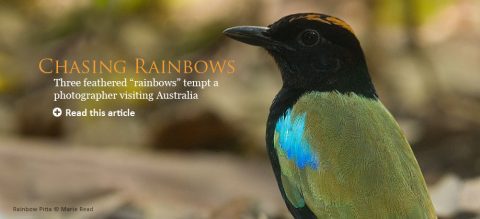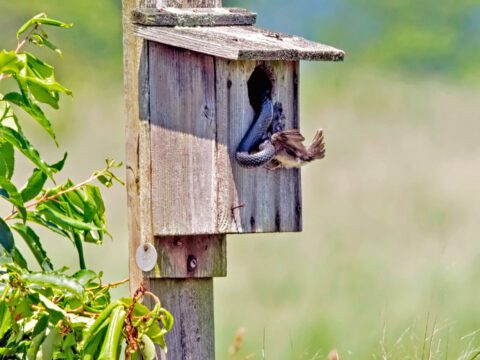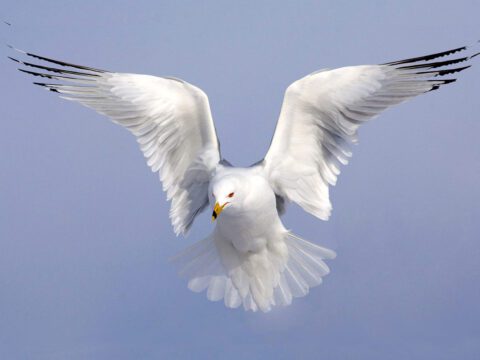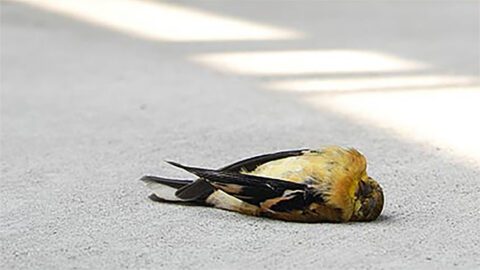At Loggerheads Over a Shrike
by David S. Wilcove
January 15, 2010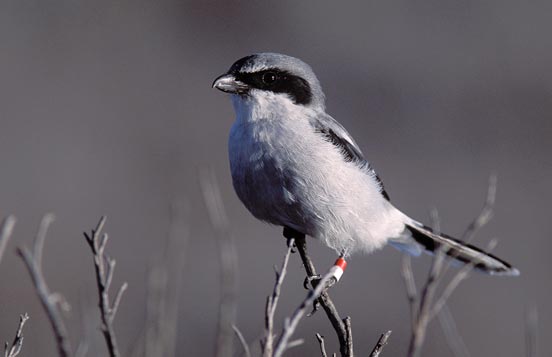
Just as one person can change the course of history, so too can one bird. At least that seems to be the case for Trampas, a San Clemente Loggerhead Shrike who is doing his best to save his kind from extinction. According to a recent article in the Los Angeles Times, Trampas, who was born in captivity in 2001 and released into the wild, has sired an astounding 62 chicks thus far. And those chicks, in turn, have led to 93 grandchicks, 61 great-grandchicks, and 25 great-great grandchicks. Given that the San Clemente Loggerhead Shrike is one of the nation’s rarest birds, Trampas’s contributions may well make the difference between survival and extinction for this small race of the Loggerhead Shrike.
For me, Trampas’s story brought back memories of a time when the San Clemente Loggerhead Shrike seemed destined for extinction, and a small group of us had to defend it against a formidable opponent: the U.S. Navy.
As its name implies, the San Clemente Loggerhead Shrike is restricted to San Clemente Island, one of the Channel Islands off the coast of Southern California. These islands have been separated from the California mainland for many thousands of years. Because of its long history of isolation, the archipelago is now home to a variety of endemic animals and plants. The island gray fox, for example, is found exclusively on six of the Channel Islands, whereas the Island Scrub-Jay lives on only one (Santa Cruz Island). The shrikes on San Clemente Island are not as well differentiated from other populations as the foxes and jays are, so the San Clemente loggerheads are classified as a subspecies rather than a separate species. (Even a skilled bird watcher might have difficulty separating a San Clemente loggerhead from a mainland loggerhead.)
Island ecosystems tend to be highly vulnerable to human disturbance, and the Channel Islands are no exception. The introduction of cattle, sheep, goats, cats, and other nonnative animals and plants, coupled with extensive habitat degradation, have endangered many of the endemic plants and animals. The San Clemente Loggerhead Shrike, for example, was placed on the federal endangered species list in 1977.
One might assume that once an animal has been designated an endangered species, it would receive adequate protection, but that’s often not the case. San Clemente Island is an important training base for the U.S. Navy and Marines. The southern end of the island, where most of the shrikes live, has long been used as a ship-to-shore bombardment range. Shells fired from warships have sparked major brush fires that have damaged shrike habitat. The Navy and the U.S. Fish and Wildlife Service (USFWS), the agency charged with enforcing the Endangered Species Act, quarreled for many years about the shrike, with the USFWS pressing for better protection of the birds’ habitat and the Navy chafing at any additional restrictions on its training exercises. By the early 1990s, the Navy was taking steps to control the feral cats that were preying on shrikes, supporting a captive-breeding effort on behalf of the birds, and creating firebreaks to control wildfires caused by exploding shells. Yet the shrikes continued to decline in the face of predation, wildfires, and other problems, dropping to about 18 wild individuals by the spring of 1996. At that time, a biologist involved in the shrike recovery program glumly wrote, “I have never been more pessimistic about the situation than I am now.” It was clear the Navy needed to consult with the USFWS and develop a more aggressive plan to protect the shrikes and their habitat, but it was reluctant to do so.
I was working at the Environmental Defense Fund (EDF) at the time, and we were approached by Gerald Winegrad, then policy director for the American Bird Conservancy (ABC). He wanted us to join ABC in a possible lawsuit against the Navy. On the face of it, there was every reason to go forward with a suit. Attorneys at both EDF and ABC agreed that the Navy was violating the Endangered Species Act. But when it comes to endangered species, things are rarely as simple as they seem. To begin with, there are major political risks in challenging the armed forces over endangered species. It’s all too easy to be ridiculed in the media for putting the welfare of some obscure plant or animal ahead of the security of the nation. Also, the environmental community has limited resources. Time spent protecting one species means some other creature is neglected. In this case, we were being asked to protect a not-too-distinctive race of a nonendangered species (yes, Loggerhead Shrikes are declining almost everywhere, but they are not yet considered an endangered species). Was it worthwhile? Gerald insisted that it was.
In the end, we all recognized that unless something was done, the shrike would probably disappear in a matter of a few years. We decided to go forward with a notice of intent to sue, in the hope that the threat of litigation might get the Navy’s attention.
It certainly did. The Deputy Assistant Secretary of the Navy quickly responded, inviting us to meet with her to discuss the situation. When Gerald, Craig Harrison (representing ABC), and I arrived at the Pentagon, we were expecting a short meeting with the deputy assistant secretary and perhaps one or two of her staff. Instead we were ushered into a conference room where a dozen high-ranking Navy officers were gathered. The base commander had been summoned from California, along with his top environmental compliance officer, and neither gentleman seemed very happy about it. A half-dozen JAGs (military attorneys from the Navy Judge Advocate General’s Corps) stared solemnly at us, along with the deputy assistant secretary and her advisors. For a moment, I contemplated screaming and running out of the room. Gerald and Craig, more accustomed to legal theater than I, seemed unperturbed and quickly got down to business. The Navy was in dangerous waters with respect to the San Clemente Loggerhead Shrike, they argued. The time for half measures was long past.
I’d like to say that as a result of our meeting, the Navy quickly reversed course and came to the rescue of the shrike, but that’s not what happened. For several more years, the ABC, EDF, Navy, and USFWS exchanged letters and held meetings. But we never went to court, because in the end, the Navy agreed it needed to improve fire protection, restore habitat, make a better effort to control predators, and upgrade the shrike captive-breeding facilities—all of which it did. The shrikes responded with gusto. According to the Los Angeles Times, there are now more than 80 breeding pairs in the wild and an additional 63 individuals in captivity, a vast improvement over the handful of wild birds that existed barely a decade ago. The San Clemente Loggerhead Shrike is hardly out of danger, but it is in far better shape today than any of us could have imagined back in 1996.
Trampas, of course, deserves credit for all he has done to save his kind from extinction. But his contribution—indeed, his very existence—would not have been possible without the tenacity of Gerald Winegrad, who led the charge on behalf of the environmental community. A single person (or a single bird) really can make a difference.

All About Birds
is a free resource
Available for everyone,
funded by donors like you
American Kestrel by Blair Dudeck / Macaulay Library
